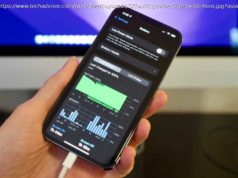Kent McDonald, agile practitioner acting mostly on the product field and co-author of the book “Stand Back and Deliver: Accelerating Business Agility”, gave recently a webinar in which he talked about several techniques to improve and being successful when practicing Product Ownership at Distance and described which are for him the „Three Habits of Highly Effective Product People“
Kent McDonald, agile practitioner acting mostly on the product field and co-author of the book “Stand Back and Deliver: Accelerating Business Agility”, gave recently a webinar for Scrum Alliance in which he talked about several techniques to improve and being successful when practicing Product Ownership at Distance. Among other experiences, he shared a handful of insights from his current assignment as a remote Product Manager for Agile Alliance working with several teams and following one of the most common rules for distributed teams which is “when one person is remote, the whole team is remote”.
One of the topics touched, product roles and responsibilities, is widely discussed nowadays in the industry. The author uses the Product Ownership Models from Todd Little as a reference to show that, despite the existence of different roles like Product Manager, Product Owner, Business Analyst played in different scenarios, there’s some common ground that should be followed across all of them. They’re called the
Three Habits of Highly Effective Product People
Focus everyone on outcome instead of output
McDonald talks about the outputs as the artefacts delivered to produce a certain solution and the outcome as the impact that the solution might have on customers, if it actually satisfies their needs. While measuring output, one can get cool insights about the amount of work a team is able to deliver but it doesn’t provide a clue if they’re building the right thing. To get there, the author suggests to include on your measuring outcome related habits, the following:
Build and maintain shared understanding
On the topic of shared understanding, the author mentions it from two perspectives. First is whether the team understands the needs they are trying to satisfy and second if they agree with the Stakeholders on the main characteristics of the solution. To get there, conversations with involved people and teams play a vital role to:
Make sure the decisions are made
After having leadership play their role on the strategic decisions as build a product or buy an existing solution to satisfy the a need, the team has to deal with daily decisions that need to keep aligned with the need their are trying to fulfil. In order to maximize their success odds, the author considers the following good practices for the team to have:
Along with those habits, McDonald summed it up by saying,
Be The Best Product Person You Can Be
The complete version of the eBook, “Product Ownership in the Wild” in which he details that, despite the technicalities of your current assignment there are guidelines that will help you on your Product Ownership duties, is available here.
The topic of product roles and responsibilities and how to excel as a Product Person was part, as mentioned, of a webinar of the Collaboration at Scale series from Scrum Alliance, in which the following list of aspects were approached:
The link for the complete webinar is available here .






